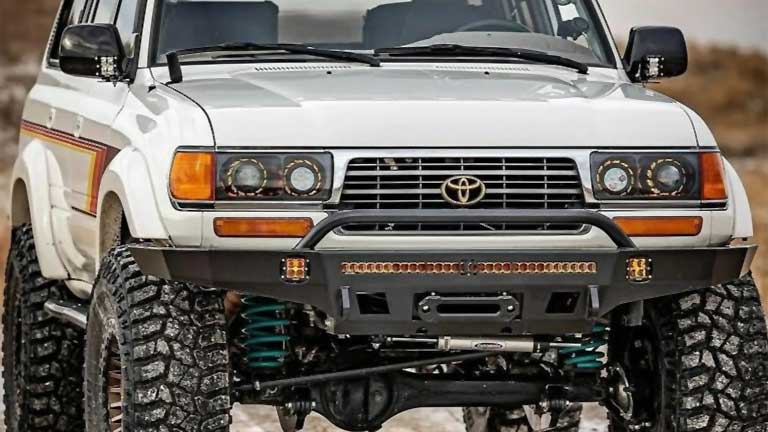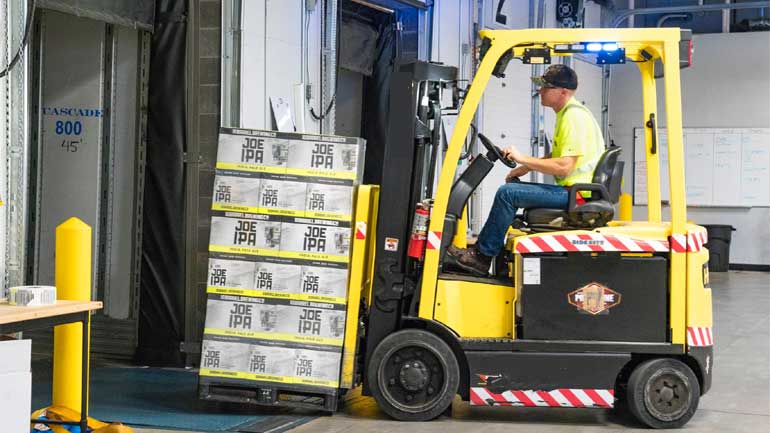
Pickup trucks, SUVs, and Jeeps are excellent vehicles for adventure travel and outdoor recreation. They are larger than most cars on the road and have more off-road power.
A suspension lift kit may be worth buying if you want to explore the off-road capabilities of your truck or SUV to its fullest potential. The suspension lift kit raises the vehicle’s height, allowing for a steeper approach, increased ground clearance, and the ability to install larger wheels and tires.
Read on to learn more about the five different types of suspension lift kits, as well as some additional tips and tricks you should keep in mind.
What are Suspension Lift Kits?
Suspension lift kits are among the most popular modification tools for four-wheel drive vehicles (Jeeps, SUVs, and pickup trucks). They give your machine a more aggressive look, allow for larger tires, and improve off-road driving experiences.
A suspension lift kit is a set of components that, when installed, raise the ground clearance of a vehicle. These kits commonly include a fresh pair of coil springs, longer shocks, control arms, and other car components necessary for a suspension lift.
Let’s go over some suspension lift kits you should know about before adding an upgrade to your ride.
1. Spacer Lift Kits
Spacer lift kits are the most affordable and simple-to-install type of suspension lift kit. They provide a straightforward way to increase ground clearance while enhancing your vehicle’s look. However, spacer lift kits do not offer the same ride quality or handling benefits as other suspension lift kits.
Spacers are installed on top of the factory coil spring, bringing up the front of the vehicle. Their advantage is that they can make your truck look better and are inexpensive. Furthermore, spacers are relatively easy to install; you don’t need many components, and they will not change how the vehicle drives.
Overall, spacers do not provide a huge performance improvement, but they will make your vehicle look much better.
2. Coil Spring Lift Kits
The most common type of suspension lift kit is a coil spring lift kit. These kits provide several advantages, such as a more comfortable ride, improved handling, and enhanced ground clearance. Coil spring lift kits typically include essential hardware and installation manuals.
However, one of the primary disadvantages of coil spring lift kits is their high cost. Another potential disadvantage is that they can be challenging to install, especially if you are unfamiliar with suspension work.
3. Shackle Reverse Suspension Lift Kits
Shackle reverse suspension lift kits give drivers a comfortable riding experience when traveling through tougher areas such as deserts, woods, and mountain trails. However, car mechanics professionals usually advise against exceeding the speed limit while driving on highways with an installed shackle reverse suspension lift kit.
If you want to spend less money lifting your off-road vehicle, shackle suspension lift kits are the way to go. However, you should keep in mind that when you use shackle suspension lift kits, you won’t be able to do much hard driving.
4. Coilover Lift Kits
Coilover lift kits are similar to coil spring lift kits. The term coilover is an abbreviation of “coil-over shock absorber.” These lift kits are notably cheaper than other lift kits and simple to install. However, they are not as comfortable as coil spring lift kits.
5. Spring Over Axle Lift Kits
The spring-over-axle method is often considered the most straightforward and least expensive method of raising a vehicle. A spring-over-axle (SOA) lift kit is a type of suspension lift kit that boosts the body of a truck or SUV by installing new springs over the vehicle’s existing front or rear axle. This configuration is beneficial for vehicles with front and rear leaf springs.
Pros and Cons of Suspension Lift Kits
If you’re interested in equipping your vehicle with a suspension lift, you should consider the pros and cons before making a final decision.
Pros of Suspension Lift Kits:
- A tougher look: A lifted truck or an SUV has a more rugged look that fits your adventurous riding endeavors.
- Ability to install larger tires: One of the most common reasons for lifting a vehicle is to place larger tires on the car. Larger tires improve off-road performance and give your vehicle a unique, robust look.
- Off-road performance: A lifted suspension is excellent for taking your vehicle on long drives on unpaved surfaces such as sand, gravel, riverbeds, mud, snow, rocks, and similar terrain types.
- Improved handling: it can provide additional clearance for the wheels to move up and down, which can help to improve traction and handling on rough terrain. A lift kit can also allow for larger wheels and tires, providing improved traction and stability.
- Better towing capacity: Lift kits allow the use of larger wheels and tires, which can improve traction and stability when towing. A lift kit can also provide additional clearance for the wheels and tires, which can help to reduce the risk of damage from debris on the road.
Cons of Suspension Lift Kits:
- Costly to install: Installing a suspension lift kit can cost you a pretty penny. Kits that provide more lift and have more components are generally more expensive. Also, you’ll need to hire a professional mechanic to install lift kits, as it is a complex process, and you most likely won’t be able to do it yourself.
- Decrease in stability: The higher your vehicle is, the more top-heavy it will be, making it more difficult to control on the road.
- Higher gas mileage: The increased weight of your vehicle will require more fuel consumption.
- Wearing out the vehicle: The extra height can strain shocks and other suspension components, causing them to wear out faster.
Prioritize Safety Above Everything Else
Choosing a suspension lift kit appropriate for your vehicle and driving needs can be challenging. You should prioritize your safety when exploring new areas with your upgraded machine.
On that note, remember that different countries and states have specific laws regarding lifting vehicles, and check those out before installing lift kits. Also, look into coverage plans insurance companies offer for modified vehicles.
Lift kits can have various effects on your vehicle, so avoiding overloading a vehicle and getting into unsafe driving conditions is always a good idea. Finally, hiring a trusted, qualified mechanic to install suspension lift kits should minimize any possible negative impacts. Good luck!




